

Live From Mars was active July 1996-December 1997.
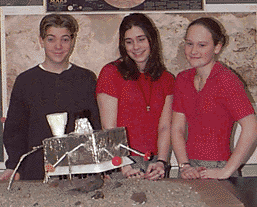
|  |
| Hi, our names are Andy Dietrich, Christen Mailler, and Val Podolak. Our task was to design and build a rover which would be able to take samples of the surface of Mars and try to find any signs of bacterial life in our samples. We built this hover craft. It has sensors in case of high or rough terrain and drills to secure the hover craft to the surface in case of a sandstorm. The rover also includes 2 cameras (built in) and 2 capture claws for picking material up and moving things around. | This is a picture of Roger, Greg, and Darrell's rover. We named it 13013. Its task was to land in a canyon or river bed and search for fossils of ancient microscopic life. Our rover is equipped with a microscope to find the fossils, a camera to take pictures, a solar heater, insulation, a radio receiver and sender. It also has rockets which can be shot into the ground to analyze rocks under the surface of Mars. |
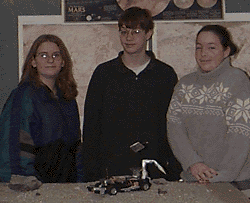
| 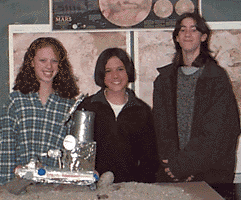 |
| Hi, we're Matt, Lauren, and Sam. Our task was to take samples of permafrost and ice caps. To accomplish this we had to build a rover to travel the surface and drill down. The Incam T-47 Snowspeeder started off with a remote-controlled car. We added a drill, solar panels, batteries, a heater, headlights, an arm to collect samples and a computer analyzer to analyze samples. Our landing site is 80 degrees N, 0 degrees W. This is the North Polar ice cap. Our alternate site is 80 degrees S, 0 degrees W, at the South Polar ice cap. | SJB243 roadrunner Hi, we're Jo, Ben and Sam. The roadrunner will be rocketed off to Mars, where it will land at 0 degrees N, 320 degrees W. There it will measure the contours of various craters in preparation for building a domed settlement in a crater. It has a laser to measure the craters with. The laser will shoot out, hit the other side, and reflect back. A sensor will time how long it takes to return, and figure out the distance. |
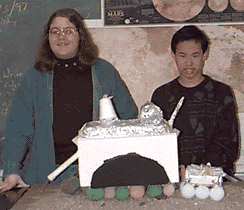
| 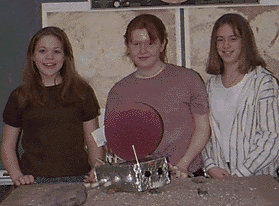 |
| Hi. Our names are Jana and Matt. Our task was to build a model to explore rift or river valleys to search for fossil life, find out about the geological history of Mars, and try to find surface water. We designed a model that would have 4 rovers. It's one big rover and 3 little ones. Each of the rovers have different modes of transportation and different instruments to help the big rover explore and get information about Mars. | We're Andrea (left), Julia (middle), and Anna (right). Our mission was to design and build a model that will analyze the weather at several sites. Our rover, named A.J.A.2000, is equipped with a thermometer, barometer, hot air balloon, cameras, 6 legs, and a wind speed and direction indicator. All of the information will be recorded by a computer inside the rover. |

| 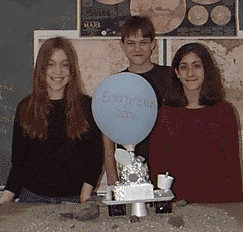 |
| Hello! We're Regina, Zara, and Jesus. This is the Zurg Tank 2001, made to explore, navigate, and map Mars' polar ice caps. Our rover is equipped with suction cups and wheels for better traction, a camera in front to take pictures and mappings, and a drill underneath to take samples of the soil. | Hi! We're Catherine, Emily, and Tom. We made the Mars Energizer Bunny 2001 rover. It includes 8 jet thrusters, a hot air balloon and wing balancers, which make our rover move. Our mission was to design and build a model of a vehicle to map the Martian surface and search out sites suitable for spacecraft landing. The sites must be easily accessible and safe for landing, but shouldn't be too far from areas of interest to scientists. |

![]()